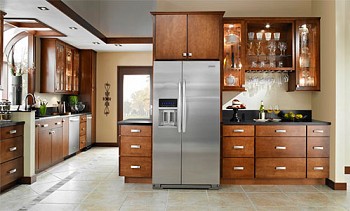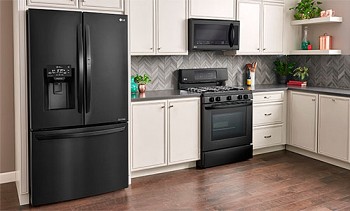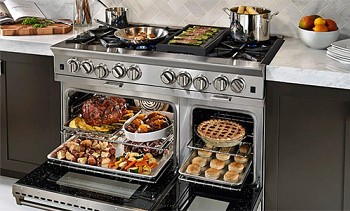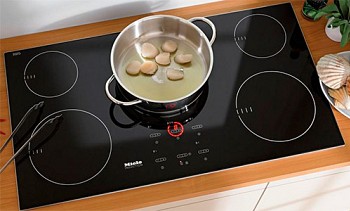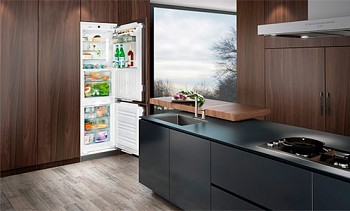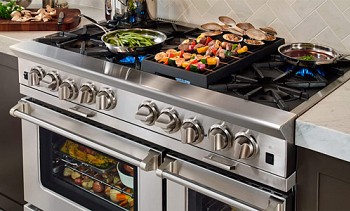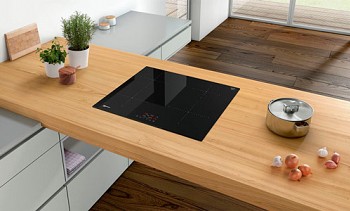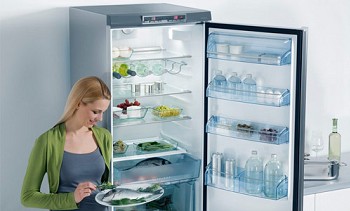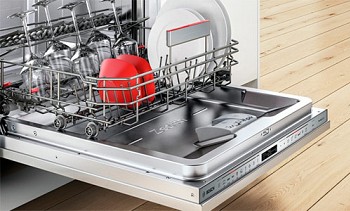The days of loud refrigerators have long passed, the ice from which had to be cracked in layers of 50 mm thick with a knife. Now, several automatic defrosting systems (drip and No Frost) are offered for comfort, where each has its own advantages and disadvantages.
To figure out which refrigerator is better - drip or Nou Frost, we will examine in detail their device and operating principles, and then compare by key parameters. This will help you choose the best option for maintenance, preservation of products, and choose a model with the right price.
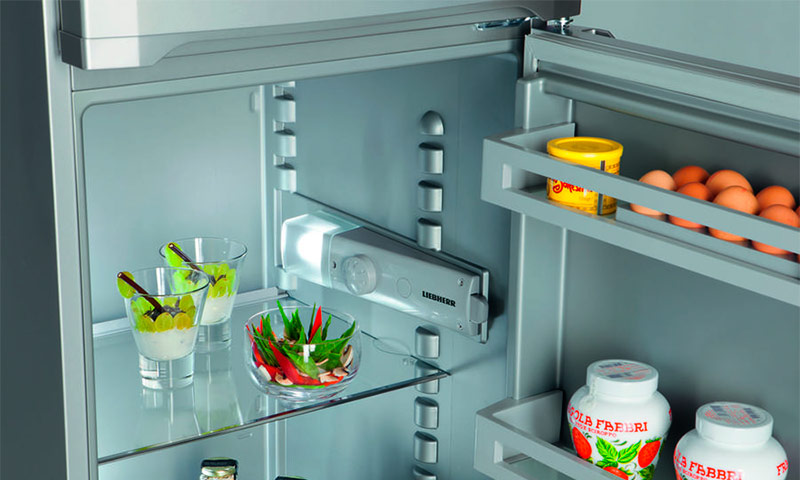
Content:
What is a drip defrosting system
First, consider devices with a drip defrosting method. It can be refrigerators with one, two or three cameras, small, medium and large sizes. They are distinguished by their economical energy consumption and beautiful design. Despite the automatic defrosting, such refrigerators still need to be disconnected from the power supply at least once a year and the internal surfaces should be washed so that there are no unpleasant odors.
The device of the refrigerator with a drip system
Refrigerators with a drip defrosting system consist of the following key components and parts:
- engine with compressor;
- a condenser (most often visible from the outside and has the shape of a coil), through which gaseous refrigerant circulates;
- capillary tube, where the gas turns into a liquid;
- an evaporator (located inside), cooling the freezer and refrigerator;
- a relay for adjusting the temperature.
The casing is supplied with insulating materials inside, which are hidden behind plastic sheathing. More advanced models have a display with the ability to accurately set the temperature and control it. Inside, all the walls are even, and contain only protrusions for fastening shelves or drawers.

Condenser open type drip defrosting system of the refrigerator. In most models, the capacitor is hidden behind a plastic wall.
The principle of operation of the refrigerator with a drip system
The drip defrosting system of the refrigerator is the removal of moisture from the chamber by collecting it on the coldest wall, through which it flows into a special container and is removed to the outside.
This is achieved through the following actions and design features:
- The compressor pressurizes the gaseous refrigerant in the condenser.
- Reaching the capillary tube, the gas is compressed and condensed, passing into the liquid phase.
- In this form, it enters the evaporator. The refrigerant begins to draw heat, cooling the interior.
- Boiling, he goes to the boilers, where he calms down and again goes into a gaseous state.
The moisture inside the refrigerator is in the air throughout the chamber. When the compressor starts to work, it automatically collects at the back on the wall of the evaporator - the coldest place and is formed by frost. When the compressor has reached enough pressure, it stops, and the back wall begins to thaw gradually, and the water flows down.
For this, a drainage hole is provided, leading fluid to a container above the compressor. From its heating, water evaporates already outside, while humidifying the air in the room.
This happens many times a day. No matter how much moisture inside the chamber, it will surely freeze on the back wall and will be removed. Noticing the “crying” panel in the refrigerator, it’s not worth doing anything - this is a working process.
What is No Frost?
Refrigerators with the No Frost system have appeared relatively recently and have become powerful competitors to all other types. From English, the name of the system is translated as “without hoarfrost”.If in the drip type of defrosting, users can see at what stage the device is now (frost appears on the back wall, replaced by streams of flowing water), then in Nou Frost these processes are hidden from the user.
The device of refrigerators No Frost
Refrigerators with the Nou Frost defrost system have a slightly different set of key components. They are supplemented by a fan with an engine and a heating element.
Main components of refrigerators with No Frost system:
- The evaporator, which takes heat and collects moisture on itself, is not located in the rear panel of the camera, but behind it.
- Even the device of such a refrigerator includes many channels in the rear and side walls to transfer cooled air throughout the entire area of the chamber.
- Since moisture does not condense on the back wall, but only on the evaporator, the drainage system, also hidden in the wall of the refrigerator, also enters the design of the refrigerator.
- TEN - providing thawing of hoarfrost.

Refrigerator condenser with No Frost system.
How the refrigerator works with the Nou Frost system
What is the Nou Frost system becomes clear after considering the principle of its work. As with other models, the main active ingredient is the refrigerant, which is compressed to a liquid state and absorbs heat from the chambers. But cold air at the same time spreads over the entire internal area thanks to one or more fans and a system of channels that ensure the passage of cold air flows.
Due to this, a uniform temperature distribution occurs, regardless of which shelf the products are on. And what about moisture? It, being in the air, condenses on the coil of the evaporator hidden inside. Then, due to the timer that the No Frost system is equipped with, at some point the heater starts and the defrosting process takes place.
The water flows through the drain into a special tank installed on the compressor and evaporates from the outside. This gives constantly dry walls of the refrigerator chambers and regularly removes moisture from it.

Tray for condensate.
Comparison of defrosting systems for refrigerators
As you can see, both systems allow refrigerators to run smoothly and relieve their owners of the regular extraction of all products and waiting 10-15 hours to remove a thick layer of ice. It is not difficult to notice that the first type is a little simpler, and the second is more difficult, but what’s better - a Nou Frost refrigerator or a drip - you can understand if you compare these systems with each other.
It is important to note that the versions of refrigerators may vary. For example, a model may have a drip defrosting system in the main chamber (refrigeration) and a Nou Frost system in the freezer.
The most advanced option is No Frost in both cameras, with separate temperature controls in each. But whether it will be better for you, decide on the basis of the following comparison.
Defrosting
Neither the drip type nor the Nou Frost requires defrosting. Both options can work for a year or more, well performing their functions. There have been cases when such models have not been disconnected from the network for up to 5 years. Automatic thawing of frozen moisture and its removal are provided by the design of both devices.
Therefore, from the point of view of functionality, they are the same, but in terms of practicality, Nou Frost is better, since the flowing water along the back wall can confuse the eyes of an uninitiated person or fall on leaning products. This comparison applies to the refrigerator.
Freezers are not drip type, due to the need to constantly maintain negative temperatures there. Therefore, here Nou Frost is clearly superior to models of refrigerators, in which a refrigerator with a drip defrosting system, and a freezer with manual defrosting.
Although the growth of hoarfrost in their freezer is not as obvious as that of the Soviet units, they will have to be thawed once every 6 months. If you buy a refrigerator with a drip system in the main chamber and No Frost in the freezer, then this problem disappears by itself.

Refrigerator with a drip system in the refrigerator and with the No Frost system in the freezer.
Service
The instruction manual provides for washing the internal surfaces at least once a year, or even more often. Otherwise, droplets of spilled liquid, juice from overripe fruits and the aroma of cooked meatballs with garlic will soak into plastic and give a characteristic smell to a household appliance. And since it is necessary to get all the products for washing, both the unit is switched off and there is no better option.
Of the disadvantages of the drip system in terms of maintenance, only the situation occurs when the drainage tube is clogged. This can happen due to plaque or ingested food particles. In this case, the water flowing down the back wall does not enter the reservoir on the compressor, but onto the floor of the refrigerator.
It is easy to eliminate the blockage with the help of a special device that comes with a refrigerator or a small wire rod. If there is also ice there now, it is allowed to pour warm water (about 100 ml) to improve cross-country ability.

Cleaning the drain hole of the refrigerator.
For Nou Frost models, moisture collection and removal takes place behind the camera, so nothing extraneous gets into it, but for that they have more parts included in the device (one or more fans, their motors, additional heating of the channels to remove water). Therefore, there is more to break.
So, it’s not difficult to clean the drain, but the repair of Nou Frost is much more expensive. We noted this nuance for ourselves and move on.
Uniform distribution of cold
In this regard, No Frost is the clear leader. Thanks to the fans, the cold air is evenly distributed throughout the chamber. The difference between the upper and lower sections can be 1-2 degrees, while for drop refrigerators this figure reaches 4-6 degrees (the closer to the freezer, the colder). Therefore, if perishable products are mistakenly put on the wrong shelf, then without Nou Frost they can go bad.
In relation to the distribution of cold, there are other differences in the drip refrigerator and Nou Frost, more noticeable during operation. Since in the first case the back wall of the evaporator is facing the refrigerating chamber, not only water droplets, but also products can freeze on it.
So, a leaned bag with apples will get “frostbite” if the fruit touches the panel. It is dangerous for sensitive fruits and vegetables (strawberries, raspberries, tomatoes, cherries). On models with No Frost, this will never happen.

The back wall of the refrigerator with a drip defrosting system.
Temperature Recovery Rate
After holding the refrigerator door for a long time or opening it up frequently, the inside temperature rises. The same thing happens when a large batch of products with room temperature is loaded. The recovery rate of -2 ...- 6 degrees, necessary for the proper preservation of food, depends on the capacity of the refrigerator and the quality of its thermal insulation, which affects heat loss.
But here Nou Frost nevertheless copes faster due to the start of circulation of air masses, which are more likely to cool in contact with the evaporator.
For that, if the light turns off, then refrigerators with a drip system will last longer autonomously and maintain a low temperature in the chambers. This is possible due to the direct exit of the evaporator to the products and the absence of channels for the passage of air through which the cold leaves.
Humidity level in the chambers
Since in the drip systems water flows down the wall of the refrigerator, it evaporates a little back into the air, so it remains moderately moist. In No Frost, fans constantly drive airflow and, after contact with the evaporator, it no longer returns moisture back to the chamber.
Here the air is more overdried. But this affects the change in the quality of products only when they are stored without containers, since without packaging, fresh herbs will lose their beautiful appearance in a day or two in both devices.If you use containers for storage, then the products will be equally juicy.

In refrigerators with the No Frost system, food must be stored in containers.
Noise at work
In refrigerators with a drip defrosting system, only the compressor periodically works. During periods of inactivity, complete silence reigns. In Nou Frost, in addition to the compressor, a fan also functions. A fan can be not one, but several, so there is more noise from it.
In numbers, it looks like this: drip - 40-42 dB, No Frost - 45-47 dB. To remedy the situation, some manufacturers have developed a fan-shaped impeller that produces less noise during rotation. But there are not many such models. Here the clear leader is the drip refrigerator.
Power consumption
It is generally accepted that Nou Frost refrigerators consume more electricity than other models. This is due to the need for power not only of the compressor, but also of the fan motors, as well as the heater. In reality, everything depends on the specific model of the refrigerator, its capacity, the number of compressors and their type.
So, a refrigerator with No Frost and one inverter-type compressor (it works without shutting down, but with a different frequency) will be much more economical than a two-compressor refrigerator with a drip system.
Net volume of the refrigerator
The internal volume intended for placement of products depends on the external dimensions of the refrigerator. Part of this space is spent on insulation materials, shelves, partitions and boxes. As a result, a drip refrigerator with a total volume of 360 liters has a usable capacity of 330 liters.
The Nou Frost, with a total of 354 liters, has a net volume of 302 liters. Where did so much space go? It is occupied by additional equipment and is fenced off by a panel, behind which there are channels for air passage.
Here, refrigerators with a drip defrosting system are the clear leader, which allow, with the same external dimensions, to load them with a large number of products.
The cost of the refrigerator
Due to the more complex design and additional elements, No Frost refrigerators are more expensive. For example, a model with a volume of 300 liters for two cameras and drip technology from a well-known brand will cost 25,000 rubles, and the same, but with Nou Frost will cost about 40,000 rubles. Wanting to save on a purchase, choose the first type.
Brief comparison of refrigerator defrosting systems
 |  | |||||||
|---|---|---|---|---|---|---|---|---|
| Drip Defrost Refrigerator | Refrigerator with defrost system No Frost | |||||||
| Defrosting | does not require user participation, but less practical | does not require user participation, but more practical | ||||||
| Service | drainage hole cleaning may be required | during normal operation, maintenance is not required | ||||||
| Cold distribution | not uniform | uniform | ||||||
| Temperature Recovery Rate | average, but after a power outage the cold lasts longer | high, but with a power outage .... | ||||||
| Humidity level in the chamber | moderately wet | very low | ||||||
| Noise at work | 40-42 dB | 45-47 dB | ||||||
| Power consumption | higher | less high | ||||||
| Net volume of the refrigerator | more | less | ||||||
| The cost of the refrigerator | less | higher | ||||||
Comparing the various systems for defrosting refrigerators, we see that each has its pros and cons. Therefore, the choice of household appliances should be carried out depending on the needs, ease of use and material capabilities. Perhaps the middle option in terms of functionality and price will be a refrigerator with a drip system and a freezer Nou Frost.

